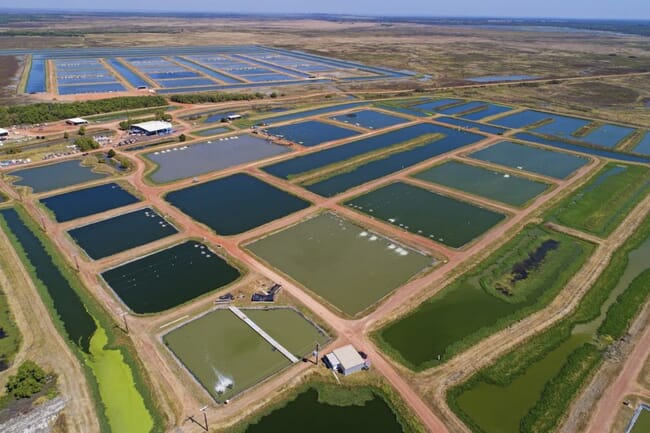
© CSIRO
So suggests a new report by the Cooperative Research Centre for Developing Northern Australia (CRCNA), which also found the growth of the industry would create 2,340 direct new jobs by 2030 - if the industry worked together to overcome identified challenges and capitalise on the opportunities outlined in the study.
Jed Matz, CEO of CRCNA, said the research, led by James Cook University (JCU), has for the first time clearly articulated a future vision for the whole Northern Australian aquaculture industry.
“The project team has engaged with more than 400 industry players from across the aquaculture sector, including those from Indigenous communities.
“The outcome of this engagement is the delivery of a set of strategic and well-supported recommendations not only focused on addressing impediments but also providing solutions to these challenges,” he said.
The study found that the region’s aquaculture is currently worth A$223 million a year – with barramundi, shrimp and pearl oysters accounting for approximately a third of this value each.
Industry participation
JCU Professor Dean Jerry said the willingness of industry participants to contribute to the research provided an unprecedented insight into the current state of play of the north Australian sector.
“The opportunity for the development of Northern Australia’s aquaculture industry is vast, with between 500,000 to 700,000 hectares suitable for marine farming in earthen and lined ponds and 50 times that available for freshwater operations.
“Our best-case scenario outlined in this report is based on better utilisation of the available areas for expansion and growth of on-shore and off-shore facilities.
“A more coordinated approach across the sector is needed to support stronger biosecurity protocols and infrastructure investment, good RD&E and production outcomes, strong marketing efforts and an increase in global demand to fully realise our 2030 vision,” he said.
Major aquaculture projects currently under development in the region include plans by the Seafarms Group to develop one of the world’s largest shrimp farms – in an operation called Project Sea Dragon – in the Northern Territory. Menawhile Tassal Group invested $30 million to develop Proserpine Prawn Farm in Queensland last year.
Attracting investment
Robert Bell from commercial aquaculture advisors Blueshift Consulting said having a strategic industry plan will help the sector and the government attract investment in commercially viable projects.
“The key to success is matching the right species, systems, critical-scale infrastructure and market accessibility with the right investors, financial structures and terms. Further, government policy and facilitation, R&D, aquaculture operators, investors, and local communities must also align with Northern Australia’s natural and strategic advantages.
“We now have a strong body of evidence to support decision-making processes and to highlight what has and has not worked commercially across these areas in the past and what needs to change to ensure success moving forward.”
Indigenous advances
In addition to more significant biosecurity support and more infrastructure investment, the report highlighted the role Traditional Owners had to play in the industry’s future.
Indigenous Land and Sea Corporation (ILSC) Chairperson Eddie Fry said cross-sector collaboration and investment is vital to increase Indigenous participation in the aquaculture sector, especially as Indigenous Australians are responsible for managing 45 per cent of Northern Australia.
He said: “Aquaculture has been practiced for thousands of years by Indigenous Australians and understanding how communities value fishing resources and fishing access is a key component to achieving greater participation of Indigenous people in commercial fishing.
“By translating traditional rights and interests into tangible economic and social benefits for communities, Indigenous Australians can achieve far higher levels of economic participation and wealth creation through employment, investment and enterprise development.
“We look forward to capitalising on the opportunities outlined in the report and continuing our support of Indigenous Australians to attract co-investment in commercially viable aquaculture projects that align with community aspirations.”




